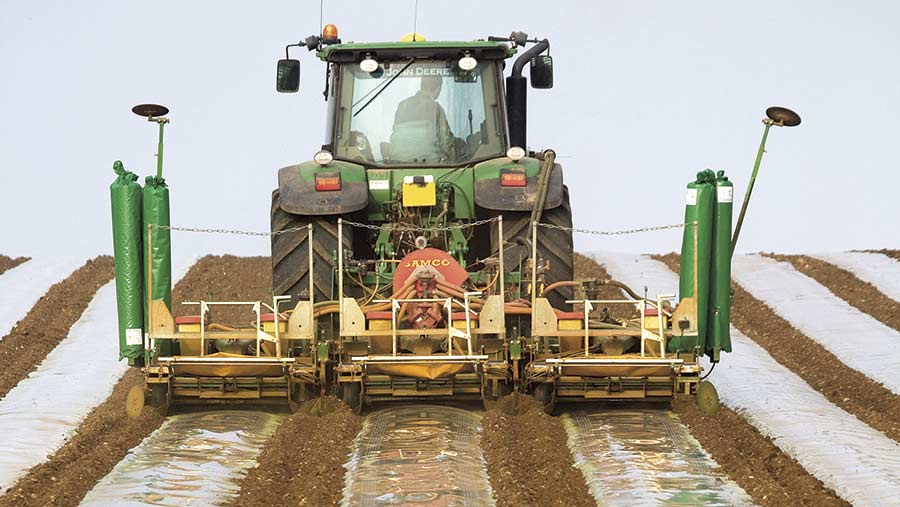How to select the correct maize variety for your farm
 © Tim Scrivener
© Tim Scrivener Variety selection can have a significant bearing on the return on investment (ROI) from growing maize for silage.
The area of maize grown for silage is predicted to rise as more dairy farmers look to increase dependence on forage to insulate their business from feed price volatility.
Tim Richmond, maize manager with Limagrain, says to derive the maximum benefit from maize it is vital to look closely at variety selection.
Choosing the correct variety
Mr Richmond says with about 30 first choice varieties on the British Society of Plant Breeders/Niab descriptive list and a considerable amount of data available to compare relative merits of different varieties the choice can appear daunting.
However, he says applying a few basic principles can help make the decision easier and allow the most appropriate choice for the individual farm.
See also: 6-step guide to successful maize establishment
“With maize costing about £950/ha to grow and harvest, it represents a considerable cost and the emphasis has to be on maximising the return on investment achieved from growing the crop,” he says.
“Two main areas will determine ROI, and each will be significantly influenced by variety choice.”
Mr Richmond says two factors are key to suitability: maturity and quality.
He adds: “Quality is vital as this is what will drive dry matter and energy intakes and the milk production potential.”
Establishing a shortlist
Many farmers want bulk, however, Mr Richmond cautions that chasing yield is pointless if it compromises the quality of the crop and therefore says crop yield should be a factor of the area grown rather than yield per hectare.
“High-yielding varieties often tend to be later maturing, consequently having poorer feed quality if they do not mature and failing to deliver higher milk production.”
Therefore, Mr Richmond maintains maize has to be considered in terms of the feed value it will put in the clamp, so agronomy and quality as the key considerations when determining variety.
He says the first objective must be to shortlist varieties of a correct maturity and agronomics suited to the farm, which will be influenced by soil type, altitude and aspect.
There is no point selecting a variety that will look good on paper if it will not get established and away quickly.
Equally, if a crop is late maturing then the risk of a delayed or compromised harvest is increased. At £950/ha it is an expensive crop to leave in the field when conditions make harvesting impossible.
Mr Richmond says there has been a trend towards early maturing varieties as it allows farmers to harvest the crop in better conditions with the added bonus of being able to include maize in the diet sooner.
“And there are the increased prospects of establishing a successor crop or stubble cultivation to help reduce soil erosion,” he explains.
Honing in on feed quality
Mr Richmond says once a suitable shortlist has been developed, the spotlight needs to be put on feed quality as there is marked difference between varieties.
It is important to look at both total energy content and energy yield rather than just starch content.
Breeders have already maximised starch content in maize, and with the cob being 92-100% digestible there is little opportunity to influence energy yield further from starch.
Instead, he believes the focus should be in cell wall digestibility (CWD) because up to 50% of the total energy available is in the leaf, stover and other vegetative material.
“After selecting varieties of correct maturity and starch content, the only way to significantly increase energy production per hectare is by improving CWD, and improving CWD improves more than just energy content and yield.”
The rest of the plant is 40-70% digestible, meaning if CWD can be improved the total energy available will increase.
He says Maize Growers Association research by Mike Wilkinson shows that each 1% increase in fibre digestibility will increase dry matter intakes by 0.12kg/day, giving another benefit from selecting varieties with higher cell wall digestibility.
Overall, Mr Richmond says correct variety choice can help reduce feed costs and increase production from forage without compromising harvest date, ultimately boosting ROI (see ‘How a high-quality variety can deliver a financial advantage’, below).
How a high-quality variety can deliver a financial advantage
The table below, which uses independent data from the British Society of Plant Breeders (BSPB)/Niab descriptive list, shows the advantage of selecting a high-quality variety.
For a farmer growing, 20ha of maize, selecting the early maturing variety Reason could produce nearly 16,000 more litres from forage, while still harvesting his crop early.
Alternatively, if the farmer chose to hold yields and cut back on feed use, each hectare of Reason would reduce concentrate use by 360kg which at £220/t is a saving of £79/ha or £1,600 for the farmer growing 20ha.
The advantage of selecting a high-quality maize variety |
||
|
BSPB/Niab average |
LG reason |
|
|
Dry matter (DM) (%) |
32.7 |
35.6 (two weeks earlier) |
|
DM yield (t/ha) |
16.9 |
17.0 |
|
Cost a tonne of DM (£) |
56.2 |
55.9 |
|
Starch yield (t/ha) |
5.4 |
5.6 |
|
Cell wall digestibility (%) |
56.9 |
57.3 |
|
Energy content (MJ/kg DM) |
11.3 |
11.5 |
|
Energy yield (MJ/ha) |
191,254 |
195,483 |
|
Litres/ha at 5.3MJ/litre |
36,086 |
36,886 |
|
Cost a litre (pence) |
2.633 |
2.576 |
|
Milk yield benefit/ha (litres) |
+798 |
|
|
Milk income benefit/ha at 26p/litre (£) |
+207 |
|
